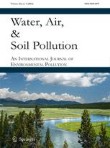
Abstract
In this study, red oak (Quercus rubra) acorns were used as precursor for preparing activated carbon by thermal activation. Red oak activated carbon (RAC) was evaluated for the removal of methyl blue (MB), using batch adsorption experiments. SEM images taken before and after adsorption experiments showed difference of surface morphology. A 26 full factorial design approach was used to determine the main and interaction effect of independent factors on dye removal rate. The six independent factors used for this study were sorbent dosage, initial dye concentration, pH, temperature, mixing rate (rpm), and mixing time. The response of this factorial design was percentage of dye removal (R%) from an aqueous solution. All independent factors showed significant influence. Initial dye concentration and adsorbent dose exhibited largest negative and positive influence on removal rate, respectively. The factorial experiments also demonstrated significan t synergistic/ antagonistic interaction between all these factors. Optimum conditions for adsorption were adsorbent dosage = 0.25 g/50 ml, initial dye concentration = 10.0 mg L 1, pH = 10, temperature = 45 °C, mixing rate = 175 rpm, and mixing time = 2.0 h. Under these conditions, response, dye removal rate R, was maximized, with a value of 97.18%. The findings of this study could be useful for industrial wastewater treatment systems.



No comments:
Post a Comment